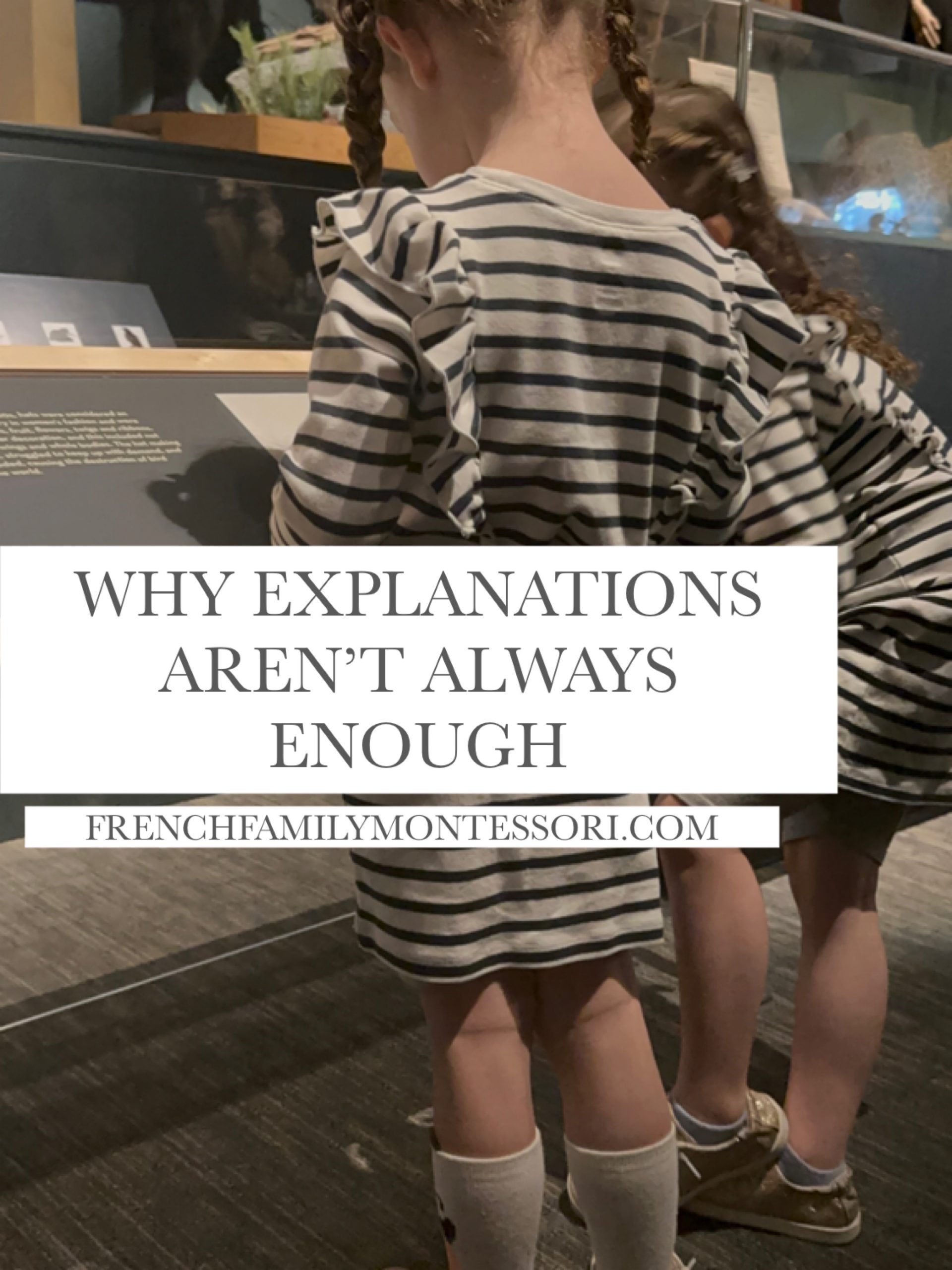In a recent post, I talked about how we avoided certain materials, as E and V weren’t ready for them quite yet, and I promised to share a little more in-depth. This will also help explain why we hold off on fantasy and unrealistic items for Montessori children.
All the time we hear people talk about certain types of video games (such as extreme violence) and how children “don’t truly understand the seriousness.” Yet I hear some of those same people make comments about a young child and how “they’ll understand because I explained it to them” in regard to unicorns, racist content, violent cartoons, talking bears who wear dresses, etc.
A child can hear what was said AS WELL as the explanation, but the thing is that that racist comment is still heard and processed. The way a Black child was treated in the Shirley Temple movie is still seen. They aren’t quite able to categorize it and place it into the bucket of ‘inappropriate’ things that shouldn’t be said/done or seen as an example of how someone shouldn’t be treated. Rather it becomes an option.
Unfortunately, it’s an available option when there are strong emotions and it’s used against a peer, just as a parent recently explains to me when their child used a racial slur again a classmate they were upset with. The parents explained how they don’t condone this word and they explained to their child that they should never use it, when it was heard in an older movie they were watching as a family.
But once that word was heard, it became an option and it was used in a moment of anger.
So when should we be able to watch older movies and have these discussions?
When a child is developmentally ready, not purely based on age as there needs to be emotional development as well. This tends to be around the beginning of the third plane of development, age 12.
Now this doesn’t mean we don’t talk about difficult topics in developmentally appropriate ways. My children understand that there were times in history when some groups of people thought they were better than others and caused harm to others. However, they haven’t been exposed to the language that was used and all the horrors because they aren’t ready to understand that and it wouldn’t be fair to those races and nationalities. What do I mean by wouldn’t be fair to others?
As we grow from children to adults, many of us come to understand what is appropriate in terms of conversation. We learn what topics we can discuss and which questions should be left unasked (as an autistic I don’t come by this naturally and rely on etiquette books and scripts to dictate my conversations). For instance, at a wedding, we don’t ask the bride and groom about their prenuptial agreements. We don’t worry a soon-to-birth mother with birthing horror stories. A child who is provided too much information than they are able to handle may ask questions or make a remark to a group of people that may cause pain, albeit not purposeful.

Currently, there is a Jim Crow exhibit at our museum. In order to enter you need to be 17 or older unless you are with a present guardian–you even need to register to enter. We talk about racism at home regularly, how some people think they are better than others just due to the colour of their skin and why that is wrong. But we do it in a developmentally appropriate way. In this exhibit, there were some dolls, cartoon images, etc. If my children saw these items they wouldn’t understand that they need to go into an ‘inappropriate’ box, they just see images of dolls. And that’s the thing, that’s how propaganda works. In North Korea the dictator has posters that have him depicted as a chubby, jolly guy surrounded by children–much like images of Santa Claus. Brainwashing that comes off, as seemingly, innocent.
With the images in that exhibit, even if I explained how harmful and wrong they are, before age 12 (remembering this varies per child’s development and is just a general age) that isn’t going to click and those images get mixed up with the likes of others, the good and the bad. Again, the difficulty of compartmentalizing appropriate and inappropriate.
Also, adults have their own challenges with this, not just children–you see it all the time in the form of memes.
And that’s why we limit what Shirley Temple movies E and V are allowed to watch at this point.
What are your thoughts?

One thought on “WHY EXPLANATIONS AREN’T ALWAYS ENOUGH”